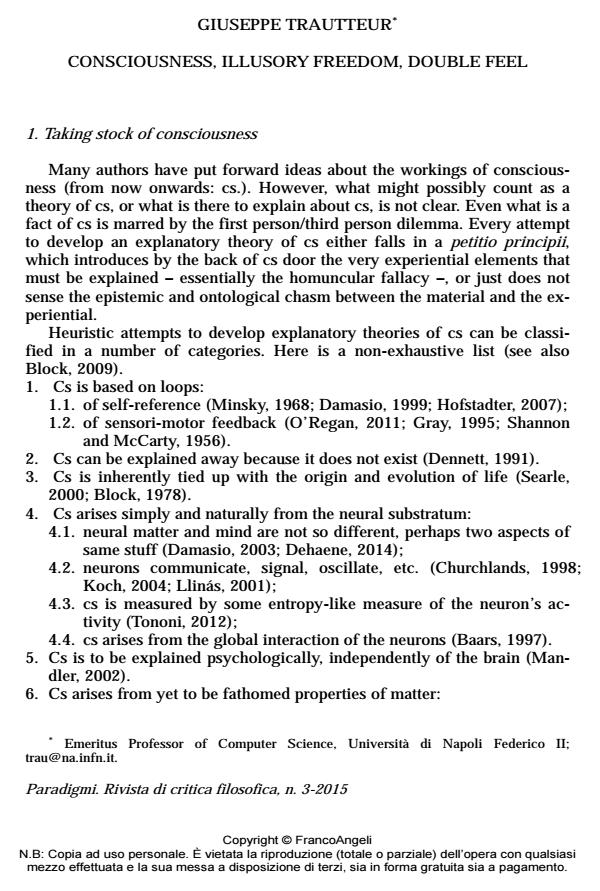Consciousness, illusory freedom, double feel
Journal title PARADIGMI
Author/s Giuseppe Trautteur
Publishing Year 2016 Issue 2015/3
Language English Pages 12 P. 11-22 File size 71 KB
DOI 10.3280/PARA2015-003002
DOI is like a bar code for intellectual property: to have more infomation
click here
Below, you can see the article first page
If you want to buy this article in PDF format, you can do it, following the instructions to buy download credits

FrancoAngeli is member of Publishers International Linking Association, Inc (PILA), a not-for-profit association which run the CrossRef service enabling links to and from online scholarly content.
A proposito della coscienza si è scritto molto, sia in articoli scientifici, sia in libri destinati a un più vasto pubblico. Il tema risale almeno a Cartesio e Spinoza e fu già ammirevolmente trattato da Huxley (1974). L’opinione corrente, largamente condivisa, considera che le relative difficoltà tecniche, ma ancor più quelle metodologiche, sono talmente difformi da quelle della normale impresa scientifica da richiedere una completa revisione di ciò che si intende con "conoscere" e "spiegare". Prendendo come un dato non ulteriormente analizzato l’esperienza in prima persona della coscienza, queste sparse osservazioni cercheranno di estrarre ciò che è conosciuto della coscienza in terza persona, distinguendolo prudentemente da ciò che ne viene detto in modo più incerto e talvolta infondato. Ulteriormente il libero arbitrio, una componente importante della comune concezione di coscienza, verrà espunto dalla coscienza fenomenica perché non esiste. In conseguenza ciò che rimane da spiegare è l’incorreggibile illusione di scegliere liberamente, nonché le conseguenze etiche, giuridiche e psicologiche di una tale illusione
Keywords: Consciousness, First person, Free will, Illusion, Methodology, Third person
Giuseppe Trautteur, Consciousness, illusory freedom, double feel in "PARADIGMI" 3/2015, pp 11-22, DOI: 10.3280/PARA2015-003002